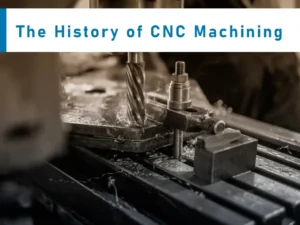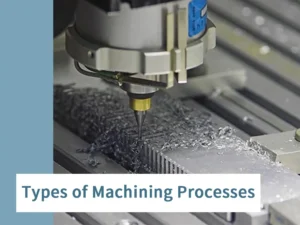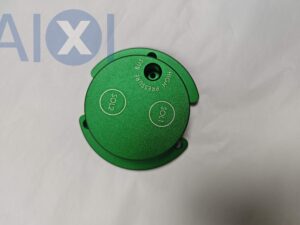With the formation of global market integration, the competition in the manufacturing industry has become increasingly fierce, and the speed of product development has become a major issue. In this case, the ability to automate rapid product development (rapid design and rapid processing), namely rapid prototyping, has become a strength in global manufacturing competition. At the same time, in order to meet the ever-changing user needs, the manufacturing industry also needs strong manufacturing technology flexibility, which can be produced in small batches or even one piece without increasing product cost. Therefore, the speed of product development and the flexibility of manufacturing technology become critical.
In this social context, Rapid Prototyping Technology (RPM) was born in the United States in the late 1980s and quickly expanded to Japan and Europe. This is a major breakthrough in manufacturing technology in recent years.
Principle of rapid prototyping
Rapid prototyping technology is a comprehensive technology that integrates materials forming, CAD, CNC, laser and other technologies. This is a system technology that integrates part design with 3D solid prototyping.
The basic principle of rapid prototyping technology is to stack (or stack) materials based on hierarchical data from 3D CAD models without the need for any molds, tools and tools, and to quickly produce digital forming techniques for prototypes or parts of any complexity.
Features of rapid prototyping:
(1) Freedom of manufacture. The meaning of free-form manufacturing has two aspects: First, there is no need to use tools to make prototypes or parts, which greatly shortens the trial production cycle of new products and saves mold costs. Second, it is not affected by the complexity of the shape. Restricted, prototypes or parts of any shape and structure as well as different materials can be made.
(2) Fast manufacturing efficiency. After the data obtained from the CAD digital model or entity is restored to the original shape, it usually takes only a few hours or ten hours and is much faster than traditional molding methods.
(3) Directly driven by the CAD model. Regardless of the rapid prototyping process, rapid prototyping equipment systems are driven directly or indirectly by CAD digital models. Rapid prototyping features for rapid prototyping and rapid prototyping were identified.
(4) The technology is highly integrated. The high integration of new materials, laser application technology, precision servo drive technology, computer technology and CNC technology supports the implementation of rapid prototyping technology.
(5) High economic efficiency. Rapid prototyping technology creates prototypes or parts without tools and is independent of the complexity of the molding or part and greatly reduces the cost of the prototype or part itself. In addition, due to the use of rapid prototyping techniques in design visualization, visual assessment, assembly and functional inspection, and the capabilities of rapid prototyping tools, it can significantly shorten the trial cycle for product development and deliver significant time benefits.
(6) The accuracy is not as good as traditional processing. When the data model is layered, some data is inevitably lost, and layered manufacturing will inevitably produce step errors. The phase transformation during lamination and the internal stress generated during solidification also cause warpage, which fundamentally determines the accuracy of RP modeling.
Rapid prototyping and its role in manufacturing
Prototyping and styling are essential elements of a sophisticated product design. However, over the years, manufacturing companies have been reducing prototype manufacturing due to expensive materials and lengthy processing. Now, with rapid modeling, every manufacturing company has the ability to improve design and take manufacturing to a higher level.
The good news is that you don’t need to buy the machine yourself, you can easily find a professional service provider to help with product design.
Advanced practices have many benefits for product design and manufacturing companies. We list five reasons why companies consider rapid prototyping and how it can help stand out in this industry.
1 Better master the appearance of the product Although the choice of modeling software is extensive and highly advanced, it is impossible for product designers to have a comprehensive understanding of the design without physical representation. Prototyping solves this interference, enabling designers to create similar real-world project models. It is easier to identify and resolve these defects before an actual project emerges. 2. Immediate adjustment Quick modeling eliminates production time and costs, which allows for multiple changes during execution. Thanks to faster and cheaper adjustments, designers can produce physical representations of products at different manufacturing stages and make changes. It also benefits end consumers because they can add their inputs to a project and help adapt to its audience. 3. Cost-effective CNC machine tools 3D printers can use different materials to make physical models. Advanced tools can use more affordable materials such as plastic. It also does not require a lot of energy and other resources to perform an action. In addition, CNC machining and 3D printing are based on CAD models with high precision, avoiding errors and waste of resources. 4. Rapid Rapid prototyping is for a reason. Within minutes, you can get a physical model of the product design and adjust the changes. This saves a lot of time and can be used to master the project. In addition, simple implementation enables designers without mechanical experience to participate in the production process. 5. Reduce Errors Modern manufacturing models are usually based on software execution without involving too much manual work. Automated processes help reduce human error and play a prominent role in product design. The machine performs precise, only in CAD models.
Rapid prototyping has been widely used in recent years, such as the automotive industry, electronics industry, consumer goods industry, aerospace industry, medical institution industry and other fields. Under such circumstances, the ability of independent rapid product development has become the global competitiveness of manufacturing industry. Foundation, this not only shortens the development cycle, but also reduces development costs, and also makes enterprises take the lead in the fierce market competition. Which of the following is the important role of AIXI Hardware in its various fields?
The first point: the application of the automotive industry: such as the design, modification, assembly test of the automobile, shape and interior parts, engine and cylinder head trial production. According to consumers’ demand for fast, safe, comfortable and trendy cars, the car is constantly being updated. For example, the previous development cycle for a new car was five years, and now car manufacturers have reduced this time to three years, and the cycle continues to shrink. The development cycle of each product is applied, which can shorten the development cycle by 80%, save more than half of the cost, and the product quality is also significantly improved.
The second point: the application of the medical industry: design, trial production, trial use of medical equipment, physicalization of CT scan information, surgical simulation, preparation of human bones and joints. In the field of medicine In recent years, people have applied more research on the application of RP technology in the medical field. Based on medical image data, the use of RP technology to make human organ models has great application value for surgery. These models help researchers, implant designers, and surgeons who want to view the patient’s bone structure without a knife. These techniques are used in many specialists such as cranial surgery, neurosurgery, oral surgery, orthopedics, and head and neck surgery to help surgeons plan for surgery, which is impossible without a physical model.
The third point: the application of the consumer goods industry: from air conditioning to electric water heaters to toys, people’s expanding needs, so that a variety of functional products continue to improve. Design verification and simulation of prototypes developed for new products, including product upgrades, using RP technology. Rapid prototyping technology is widely used, and it is believed that as rapid prototyping manufacturing technology matures and improves, it will be promoted and applied in more and more fields.
Fourth point: the application of the electronics industry: People are paying more and more attention to the fashion of electronic products, forcing manufacturers to update their products more and more quickly. See, if the design flaws are not found in the design phase, it will bring huge losses to the manufacturer. Therefore, all the world’s leading companies use SL technology for product development.
The fifth point: the application of aerospace technology: SL rapid prototyping in the dimensional accuracy, surface finish, fine structure of the processing SL process has the advantages that the other rapid prototyping process can not match. In the aerospace industry, aerodynamic ground simulation experiments are an essential part of designing an advanced world-class round-trip system (ie, a space shuttle). The model used in this experiment is complex in shape, high in precision, and has streamlined characteristics. The RP technology is used to automatically complete the solid model by the RP device according to the CAD model, which can guarantee the quality of the model.
In short, the development of rapid prototyping technology is a breakthrough in the manufacturing field in the past 20 years. It is not only different in the manufacturing principle from the traditional method, but more importantly, in the current situation of the industry strategy with the market response speed as the first, RP Technology can shorten product development cycles, reduce development costs, and increase the competitiveness of companies. Here are some examples of the role of this technology in the product development process.
1. Design verification: used for new product design and certificate verification, structural design verification, design defects, and product design. In modern product design, the design method is more and more advanced. The computer-aided design makes the product design fast and intuitive. However, due to the limitations of software and hardware, the designer can not intuitively evaluate the effect of the designed product and the rationality of the structure and the production process. feasibility. Rapid prototyping technology provides designers with advanced product specifications by quickly obtaining product samples and visually judging products. Our company is a cover piece for the new 250 motorcycle made by a motorcycle manufacturer, including 13 fuel tanks, front and rear baffles, seat and side cover. With AFS molding technology, all production was completed in just 12 days. The designer put the sample on the car body, and after careful evaluation and repeated comparison, the appearance of the product was re-modified and reached an ideal state. This verification process makes the design more perfect and avoids the waste caused by blind production.
2. Assembly Verification: Produce the actual sample and perform the assembly test. A company in Tianjin entrusted us to process the fax machine casing and telephone. The user not only has to perform an appearance evaluation, but also loads the internal parts of the fax machine into the sample for assembly experiments and structural evaluation. The company first chose traditional processing methods, block processing, manual bonding, and it only took 20 days to process a set of telephone handsets. It is expected that it will take 2 months to produce a fax machine sample at a cost of 25,000 yuan. Our company uses rapid prototyping technology to give the client a total of six pieces in just 15 days. The user found seven assembly interferences and unreasonable structures in the assembly experiment. Compared with the two methods before and after, the conventional processing method of the BABS plastic assembly sample of the fax machine has many processes, and the manual splicing is time-consuming and laborious, the material waste is large, and the processing cycle is long. For complex structures and curved surfaces, the processing is rough, the dimensional accuracy is low, and the one-to-one correspondence between the produced physical model and the design model cannot be established, so it is difficult to check the design errors in the assembly experiment. The automatic molding method, highly automated, one-shot molding, short cycle, high precision, and one-to-one correspondence with the design model, is more suitable for the production and manufacture of sample assemblies.
3. Functional verification: Our company manufactures a 250-type twin-cylinder motorcycle cylinder head for a motorcycle factory. This is a newly designed engine that requires 10 samples for engine simulation experiments. The part has a complex internal structure that cannot be machined by conventional machining and can only be cast and cast. The whole process needs to go through the processes of mold opening, core making, mold forming, casting, sand blasting and machining, which is the same as the actual production process. It takes only three months to open the mold alone. This is unacceptable for small batches of sample production, both in time and on wood. We use the selective laser sintering technology to cast the investment material as the molding material. On the rapid prototyping machine, only 10 casting molds of the part are processed in 5 days, and then the investment casting process is carried out. After 10 days, the casting blank is obtained. . After the necessary machining, the prototype of this engine was completed in 30 days.
4. Rapid casting: In the key industries of manufacturing, especially aviation, aerospace, defense, automotive, etc., the core components of the common foundation are generally metal parts, and quite a few metal parts are asymmetric, have irregular surfaces or complex structures and internal It also contains parts with fine structure. The production of these parts is often done by casting or dismantling. In casting production, the manufacture of stencils, core boxes, wax-on-type, and die-casting molds is often done by machining methods, sometimes requiring bench fits for trimming, which is not only long-term, costly, but also from mold design to manufacturing. It is a complicated process with multiple links. Any mistakes will lead to all rework. Especially for some complex castings, such as blades, impellers, engine blocks, cylinder heads, etc., the manufacture of the mold is a more difficult problem, even if the use of expensive equipment such as CNC machining centers, processing technology and process feasibility There are still great difficulties in terms of aspects. It is conceivable that the manufacturing cycle, cost and risk are considerable if trial or small batch production of such parts is encountered. Laser rapid prototyping technology has proven to be a very effective means of solving small batches of complex parts. So far, we have successfully produced thousands of sweeping drills including leaf bells, blades, engine rotors, pump bodies, engine blocks, cylinder heads, etc. by laser rapid prototyping. We call the combination of rapid prototyping and casting process. Rapid casting process. Since the rapid casting process eliminates the need to open the mold, the manufacturing cycle and cost are greatly reduced. The S-segment of gas-fired two-motors produced by the rapid casting method, with a diameter of 80Omm and a height of 410m, is manufactured according to the traditional metal casting method. The mold manufacturing cycle takes about half a year and costs hundreds of thousands. Rapid casting and casting of the investment mold for 7 days (in 6-stage combination), assembling, combining and casting for 10 days, the cost is not more than 20,000 per piece (a total of 6 pieces). With the casting mold of the new tank supercharger produced by the rapid prototyping method, we completed the production of 37 wax molds in 5 days, making the entire trial production task three months ahead of schedule.
5. Over molding: In practical applications, many products must be processed through a mold. It is a time-saving and cost-saving method to make a product sample and then mold it with a molding machine. Engine casing prototypes are difficult to machine with conventional machining methods and must be molded by a mold. It is estimated that the mold opening time will be 8 months and the cost will be at least 300,000. If the product design is wrong, the entire mold will be scrapped. We used the rapid prototyping method to make a plastic sample for the product, which was used as a mold master to reproduce the silicone mold. The master mold is fixed in an aluminum standard mold frame, poured into a matching silicone rubber, and left to stand for 12-20 hours. The silicone rubber is completely solidified, the mold frame is opened, and the silicone rubber knife is taken out along a predetermined parting line, and The master mold is taken out, and the silicone mold used for casting the pump shell wax type is successfully converted.
Share The Blog

 Deutsch
Deutsch Français
Français 日本語
日本語 Español
Español







